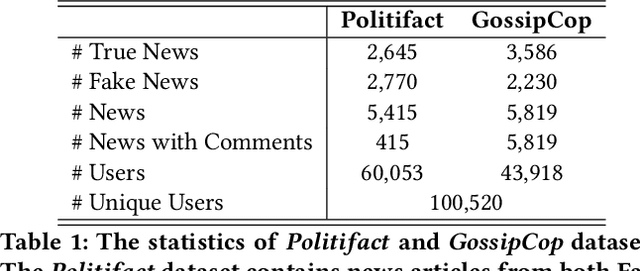Domain Adaptive Fake News Detection via Reinforcement Learning
Paper and Code
Feb 16, 2022



With social media being a major force in information consumption, accelerated propagation of fake news has presented new challenges for platforms to distinguish between legitimate and fake news. Effective fake news detection is a non-trivial task due to the diverse nature of news domains and expensive annotation costs. In this work, we address the limitations of existing automated fake news detection models by incorporating auxiliary information (e.g., user comments and user-news interactions) into a novel reinforcement learning-based model called \textbf{RE}inforced \textbf{A}daptive \textbf{L}earning \textbf{F}ake \textbf{N}ews \textbf{D}etection (REAL-FND). REAL-FND exploits cross-domain and within-domain knowledge that makes it robust in a target domain, despite being trained in a different source domain. Extensive experiments on real-world datasets illustrate the effectiveness of the proposed model, especially when limited labeled data is available in the target domain.
 Add to Chrome
Add to Chrome Add to Firefox
Add to Firefox Add to Edge
Add to Edge